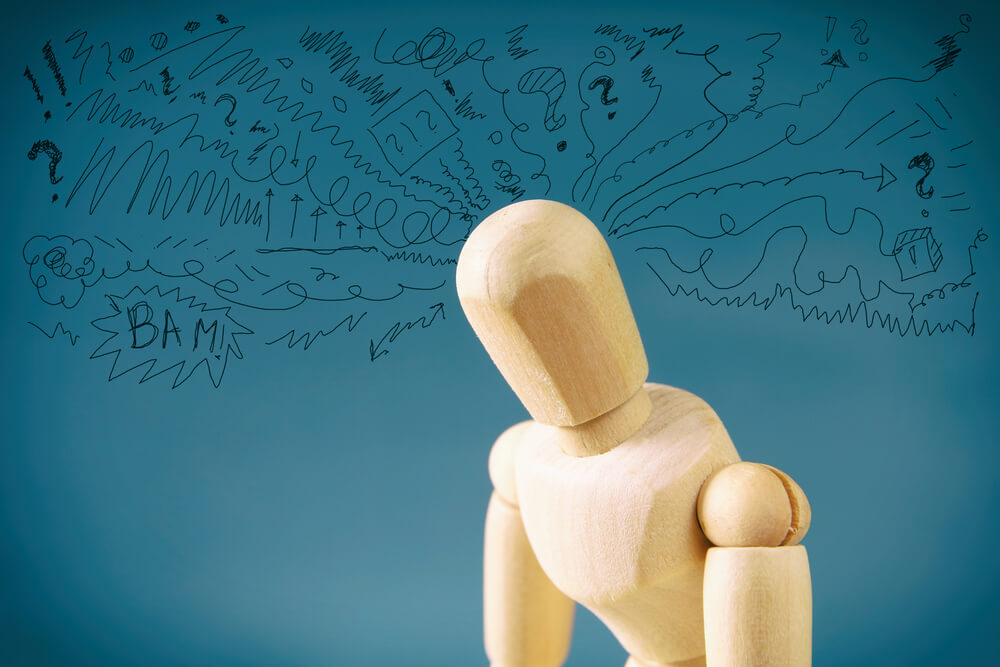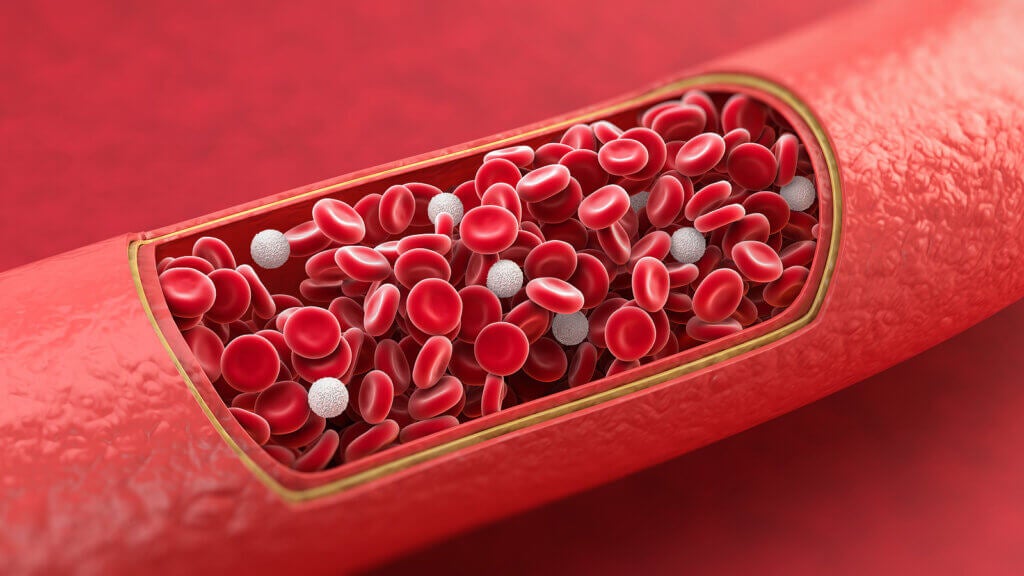Attention Disturbances


Escrito y verificado por el psicólogo Bernardo Peña
Attention disturbances are common in many psychopathologies. Whether primarily or subsidiary, they cause a notable decrease in the capacity for action and coordination in the rest of the individual’s cognitive processes. In this article, we’ll examine what attention actually is, as well as its main alterations or disorders.
Attention disturbances
Attention is a basic psychological process that guides and coordinates how our senses and thoughts act to select, distribute, and maintain all cognitive activity in general.
Therefore, as a process, it allows you to filter the flow of information received by the body and focus psychic activity on a specific stimulus or area of the field of consciousness. With the latter, we’re referring to the ability to communicate between the internal and external environment.
This process is necessary for other more complex ones, such as learning or memory, thus establishing a hierarchical order, where its operation conditions others. For attention to exist, it’s essential for there to be some degree of consciousness. When this is altered then it affects how efficient our attention is, and, in turn, other psychological processes too.
Attentional activity process
As mentioned before, attention directs mental resources towards specific stimuli. This process can be divided into three stages:
- The initiation of attention: This consists of the capture of attention either passively or actively. The passive process occurs involuntarily, and attention is captured by the different changes that occur in the person’s external and internal environment. In the active process, we discriminate between stimuli depending on our body’s needs.
- Maintaining attention: This consists of permanently focusing on the object in order to process information.
- The cessation of the attentional process: This consists of a change of attention to another relevant stimulus for the organism. This can be due to mechanisms of habituation and sensory fatigue, as well as by the subject’s own will, or even by the irruption of a novel and moderately salient stimulus.

Attention: automatic or controlled processes
Within the variety of cognitive processes, we can distinguish those in which we need active control, and those in which we don’t:
- Automatic processes that don’t involve a significant level of conscious control. Multiple automatic processes can occur in the individual simultaneously.
- Controlled processes that do require a level of attention and awareness. These processes occur sequentially and they can last longer than the automatic ones.
Automatic processes lack voluntary control. This can be evidenced in non-associative learning. Some examples here are habituation (a decreased response resulting from repeated exposure to a stimulus) or sensitization (increased response resulting from repeated exposure to a stimulus). There are also behaviors that can be automated over time.
When someone is learning to drive, they initially require conscious control and focused attention in every action they take. Later, as these actions improve, they no longer require conscious control, and there’ll be a greater number of cognitive resources for other concomitant actions.
Automated actions
Actions become relatively automatic, but we can direct attention to them if necessary. This can be observed in any behavior or purposeful movement, in which the procedure is so internalized that it’s stereotyped. Voluntary control falls on the initiation and completion of the action, such as chewing gum or riding a bicycle.
Thanks to this, it can lead to more complex actions, where procedures that don’t require attention go into the background, allowing the body to maintain attention on other actions that require it.
Otherwise, it would be practically impossible to merge thick and thin movements as in writing or painting. We couldn’t consciously control the movements of the fingers on a pencil and, simultaneously, the movement of the arm.
Attention functions
Attention functions are the ones that are affected when attention disorders or alterations occur. The main attention functions are:
- Scrutiny: This is the ability to search and locate in the perceptual field to recognize patterns and meanings.
- Focusing: Discrimination in the perceptual field to select one stimulus and eliminate the others.
- Filtration: The classification of stimuli as relevant or irrelevant. This ability would be impaired in attention deficit disorders.
- Attentional capacity: This refers to the number of elements that the subject can attend to at the same time within a given activity.
- Simultaneous attention: The ability to attend to different elements with different content at the same time.

Components of care
Attention can be of the following types:
- Involuntary: This is characterized by a state of vigilance, arousal, and alertness. The subject is not oriented to a specific stimulus in the environment, and they don’t have a particular interest in it. This is like a type of “routine” attention.
- Spontaneous: The sudden or unexpected appearance of stimuli attracts attention.
- Voluntary: There’s intentional scrutiny, tracking, or a search to find a specific stimulus.
- Sustained: Also called concentration, this refers to the constant maintenance of attention based on prolonged scrutiny over time, where several areas of the senses may be involved.
- Selective: Stimuli are filtered and focused on the stimulus that’s considered relevant, eliminating others, considered distractors.
- Alternating: Also called cognitive flexibility, it refers to the focal change between different stimuli.
- Divided: Simultaneous attention of more than one stimulus occurs; the relative information of both is processed at the same time.
Attention disturbances
Quantitative alterations due to increased attention:
- Hyperprosexia: Here there’s an exacerbation of voluntary attention; the subject concentrates on something obsessively and the rest of the stimuli aren’t able to provoke their attention.
- Attentive depolarization: Increased attention is polarized towards stimuli coming from within the subject (everything), and isolating itself from external stimuli (nothing).
Quantitative alterations due to decreased attention:
- Hypoprosexia: There is a marked decrease in attention span.
- Aprosexia: Refers to the inability to pay attention.
- Pseudoaprosexia: The attention is focused on the external environment of the individual.
- Paraprosexia: Involuntary deviations of attention occur. Because of the detriment of voluntary attention, spontaneous attention is exacerbated. In addition, a psychomotor increase is observed.
Conclusions about attentional processes and their alterations
Attention is essential in order to coordinate and direct the rest of the cognitive processes; also to carry out specific voluntary acts. Attention disturbances involve a partial or total lack of coordination of our mental system. In these cases, it’s a good idea to differentiate between mild or pathological, temporary or permanent alterations, and neuropsychiatric treatment is necessary.
Attention disturbances are common in many psychopathologies. Whether primarily or subsidiary, they cause a notable decrease in the capacity for action and coordination in the rest of the individual’s cognitive processes. In this article, we’ll examine what attention actually is, as well as its main alterations or disorders.
Attention disturbances
Attention is a basic psychological process that guides and coordinates how our senses and thoughts act to select, distribute, and maintain all cognitive activity in general.
Therefore, as a process, it allows you to filter the flow of information received by the body and focus psychic activity on a specific stimulus or area of the field of consciousness. With the latter, we’re referring to the ability to communicate between the internal and external environment.
This process is necessary for other more complex ones, such as learning or memory, thus establishing a hierarchical order, where its operation conditions others. For attention to exist, it’s essential for there to be some degree of consciousness. When this is altered then it affects how efficient our attention is, and, in turn, other psychological processes too.
Attentional activity process
As mentioned before, attention directs mental resources towards specific stimuli. This process can be divided into three stages:
- The initiation of attention: This consists of the capture of attention either passively or actively. The passive process occurs involuntarily, and attention is captured by the different changes that occur in the person’s external and internal environment. In the active process, we discriminate between stimuli depending on our body’s needs.
- Maintaining attention: This consists of permanently focusing on the object in order to process information.
- The cessation of the attentional process: This consists of a change of attention to another relevant stimulus for the organism. This can be due to mechanisms of habituation and sensory fatigue, as well as by the subject’s own will, or even by the irruption of a novel and moderately salient stimulus.

Attention: automatic or controlled processes
Within the variety of cognitive processes, we can distinguish those in which we need active control, and those in which we don’t:
- Automatic processes that don’t involve a significant level of conscious control. Multiple automatic processes can occur in the individual simultaneously.
- Controlled processes that do require a level of attention and awareness. These processes occur sequentially and they can last longer than the automatic ones.
Automatic processes lack voluntary control. This can be evidenced in non-associative learning. Some examples here are habituation (a decreased response resulting from repeated exposure to a stimulus) or sensitization (increased response resulting from repeated exposure to a stimulus). There are also behaviors that can be automated over time.
When someone is learning to drive, they initially require conscious control and focused attention in every action they take. Later, as these actions improve, they no longer require conscious control, and there’ll be a greater number of cognitive resources for other concomitant actions.
Automated actions
Actions become relatively automatic, but we can direct attention to them if necessary. This can be observed in any behavior or purposeful movement, in which the procedure is so internalized that it’s stereotyped. Voluntary control falls on the initiation and completion of the action, such as chewing gum or riding a bicycle.
Thanks to this, it can lead to more complex actions, where procedures that don’t require attention go into the background, allowing the body to maintain attention on other actions that require it.
Otherwise, it would be practically impossible to merge thick and thin movements as in writing or painting. We couldn’t consciously control the movements of the fingers on a pencil and, simultaneously, the movement of the arm.
Attention functions
Attention functions are the ones that are affected when attention disorders or alterations occur. The main attention functions are:
- Scrutiny: This is the ability to search and locate in the perceptual field to recognize patterns and meanings.
- Focusing: Discrimination in the perceptual field to select one stimulus and eliminate the others.
- Filtration: The classification of stimuli as relevant or irrelevant. This ability would be impaired in attention deficit disorders.
- Attentional capacity: This refers to the number of elements that the subject can attend to at the same time within a given activity.
- Simultaneous attention: The ability to attend to different elements with different content at the same time.

Components of care
Attention can be of the following types:
- Involuntary: This is characterized by a state of vigilance, arousal, and alertness. The subject is not oriented to a specific stimulus in the environment, and they don’t have a particular interest in it. This is like a type of “routine” attention.
- Spontaneous: The sudden or unexpected appearance of stimuli attracts attention.
- Voluntary: There’s intentional scrutiny, tracking, or a search to find a specific stimulus.
- Sustained: Also called concentration, this refers to the constant maintenance of attention based on prolonged scrutiny over time, where several areas of the senses may be involved.
- Selective: Stimuli are filtered and focused on the stimulus that’s considered relevant, eliminating others, considered distractors.
- Alternating: Also called cognitive flexibility, it refers to the focal change between different stimuli.
- Divided: Simultaneous attention of more than one stimulus occurs; the relative information of both is processed at the same time.
Attention disturbances
Quantitative alterations due to increased attention:
- Hyperprosexia: Here there’s an exacerbation of voluntary attention; the subject concentrates on something obsessively and the rest of the stimuli aren’t able to provoke their attention.
- Attentive depolarization: Increased attention is polarized towards stimuli coming from within the subject (everything), and isolating itself from external stimuli (nothing).
Quantitative alterations due to decreased attention:
- Hypoprosexia: There is a marked decrease in attention span.
- Aprosexia: Refers to the inability to pay attention.
- Pseudoaprosexia: The attention is focused on the external environment of the individual.
- Paraprosexia: Involuntary deviations of attention occur. Because of the detriment of voluntary attention, spontaneous attention is exacerbated. In addition, a psychomotor increase is observed.
Conclusions about attentional processes and their alterations
Attention is essential in order to coordinate and direct the rest of the cognitive processes; also to carry out specific voluntary acts. Attention disturbances involve a partial or total lack of coordination of our mental system. In these cases, it’s a good idea to differentiate between mild or pathological, temporary or permanent alterations, and neuropsychiatric treatment is necessary.
- Beltrán, J. (1996). Procesos, estrategias y técnicas de aprendizaje. Madrid: Síntesis.
- Blázquez-Alisente, J. L., Paúl-Lapedriza, N., & Muñoz-Céspedes, J. M. (2004). Atención y funcionamiento ejecutivo en la rehabilitación neuropsicológica de los procesos visuoespaciales. Rev Neurol, 38(5), 487-495.
- Caballo, V. E., Salazar, I. C., & Carrobles, J. A. I. (2014). Manual de psicopatología y trastornos psicológicos. Pirámide.
- Peña-Herrera, B. (2018) Psicopatología General. Samborondón: Universidad Espíritu Santo – Ecuador
Este texto se ofrece únicamente con propósitos informativos y no reemplaza la consulta con un profesional. Ante dudas, consulta a tu especialista.







